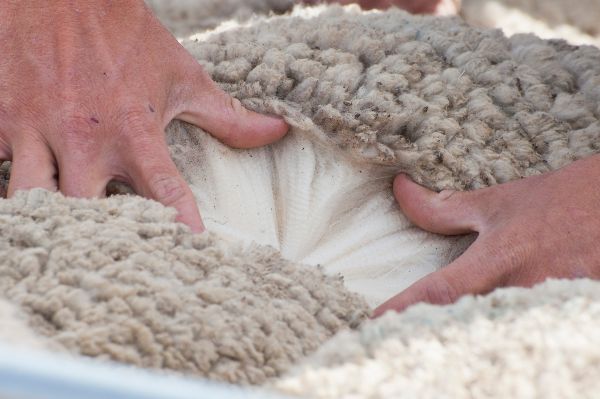
The latest wool working group report brings some hope for reform, innovation and, most importantly, boosted returns for a sector that has languished for almost a generation of farmers as the smallest part of their income stream.
Released this month, the vision and action plan developed by the Wool Industry Project Action Group contains three key recommendations to kickstart the strong wool sector as a sustainable economic fibre base once again.
These include developing a market focused investment case and road map for a strong wool sector, establishing the capability the sector needs to become “match fit” for future opportunities and establishing better co-ordination and governance capability.
The plan comes as sheep farmers continue to receive strong meat returns, however struggle to break even on wool income and often face a loss on wool harvest as shearing costs soak up low revenue. This year has some farmers receiving around only $1 a kg for their wool when it costs $4.50 to harvest it off the sheep.
In releasing the report, Agriculture Minister Damien O’Connor said global trade disruption from Covid-19 has only made matters worse for the strong wool sector and has worsened the sector’s lack of investment and the break down in industry structure.
“I now want to see this sector step up. There is no single idea or government policy to solve the wool sectors’ problems,“ he said.
The government has also just released its $84 million Sustainable Farming Fund Futures funding for the primary sector, and the Minister is optimistic there will be innovative projects specifically for wool development that come from that.
This includes the Woolchemy project, aiming to develop sustainable processes for transforming wool into a higher value end-product.
The government support and investment has been welcomed by many in the industry and will serve to further buoy farmer sentiment in the sheep sector where red meat prices have continued to perform relatively well, despite the Covid-19 disruptions.
Bayleys Gisborne director and country sales specialist Simon Bousfield has been overseeing the final sale of two substantial East Coast properties with colleagues James Bolton-Riley and Stephen Thomson.
Both north of Gisborne, the 2,720ha Mangaheia Station and 1,094ha Panikau Station are iconic properties that have witnessed strong interest over the relatively short time they have been on the market.
“Numerous buyers from across the country undertook substantial due diligence before submitting offers. Sadly, little consideration would have been given to any future wool returns. Woolsheds are responsible for a large amount of employment for many people up and down the coast, with many farms investing heavily in their woolshed and sheep handling infrastructure over the years. It’s great to see new initiatives identifying new opportunities for wool, but more emphasis is needed to provide returns anywhere near those experienced by farmers in the past.”
Bayleys Rangitikei salesperson Peter Stratton said low wool returns have not curtailed interest in quality sheep properties in his region, thanks largely due to strong red meat returns.
“Buyers who are investing are certainly not doing so on grounds of wool returns, so any increase in values as a result of the industry plan will be most welcome, it is good to see government put its support behind the plan.”
Margot Raich, chief executive of The Wool Company near Taihape has built a strong business retailing wool products.
She says the past 15 years have witnessed a steady decline in wool’s value, and it will require a concerted effort to recoup that loss.
“We really need to see the government taking action and do what they said they would do, including using wool as insulation in housing and putting in wool carpets in government buildings. Now is the time for wool as we seek out low carbon materials that are biodegradable, sustainable and traceable.”
Recent research work by AgResearch has highlighted the flexibility and sustainability of strong wool fibres for some highly varied applications. Scientists at AgResearch at Lincoln University have found it is possible to extract wool derived proteins to combine into pet food.
Wool proteins have proven to be highly extractable with excellent digestive properties compared to conventional plant-based pet food compounds.
Other work has highlighted how wool’s ability to break down at the end of its useful life makes wool a far more attractive fiber than plastic-based micro-particles that are often washed into the ocean through waste-water from synthetic clothes washing. Ground up wool carpets have shown to take up to six months to break down into base nutrients including calcium, phosphorous and carbon.
Bayleys national director rural Duncan Ross says wool is a raw material whose time is coming, prompted by greater awareness among consumers about the impact of product lifecycle on the environment, and manufacturers seeking out flexible fiber options.
“It also comes at a time when consumers are seeking out high quality, grass-fed red meat. If wool can be lifted to the same price level our quality sheep meat has attained, we can offer consumers the ‘full package’ of food and clothing that is healthy and sustainable, while also delivering our farmers a rewarding return.”



 John Mazenier: Gaffer Tape And Glue Delivering New Zealand’s Mission Critical Services
John Mazenier: Gaffer Tape And Glue Delivering New Zealand’s Mission Critical Services Earthquake Commission: Ivan Skinner Award Winner Inspired By Real-life Earthquake Experience
Earthquake Commission: Ivan Skinner Award Winner Inspired By Real-life Earthquake Experience Reserve Bank: Consultation Opens On A Digital Currency For New Zealand
Reserve Bank: Consultation Opens On A Digital Currency For New Zealand NIWA: Ship Anchors May Cause Extensive And Long-lasting Damage To The Seafloor, According To New Research
NIWA: Ship Anchors May Cause Extensive And Long-lasting Damage To The Seafloor, According To New Research New Zealand Customs Service: A Step Forward For Simpler Trade Between New Zealand And Singapore
New Zealand Customs Service: A Step Forward For Simpler Trade Between New Zealand And Singapore Horizon Research: 68% Say Make Banks Offer Fraud Protection
Horizon Research: 68% Say Make Banks Offer Fraud Protection



